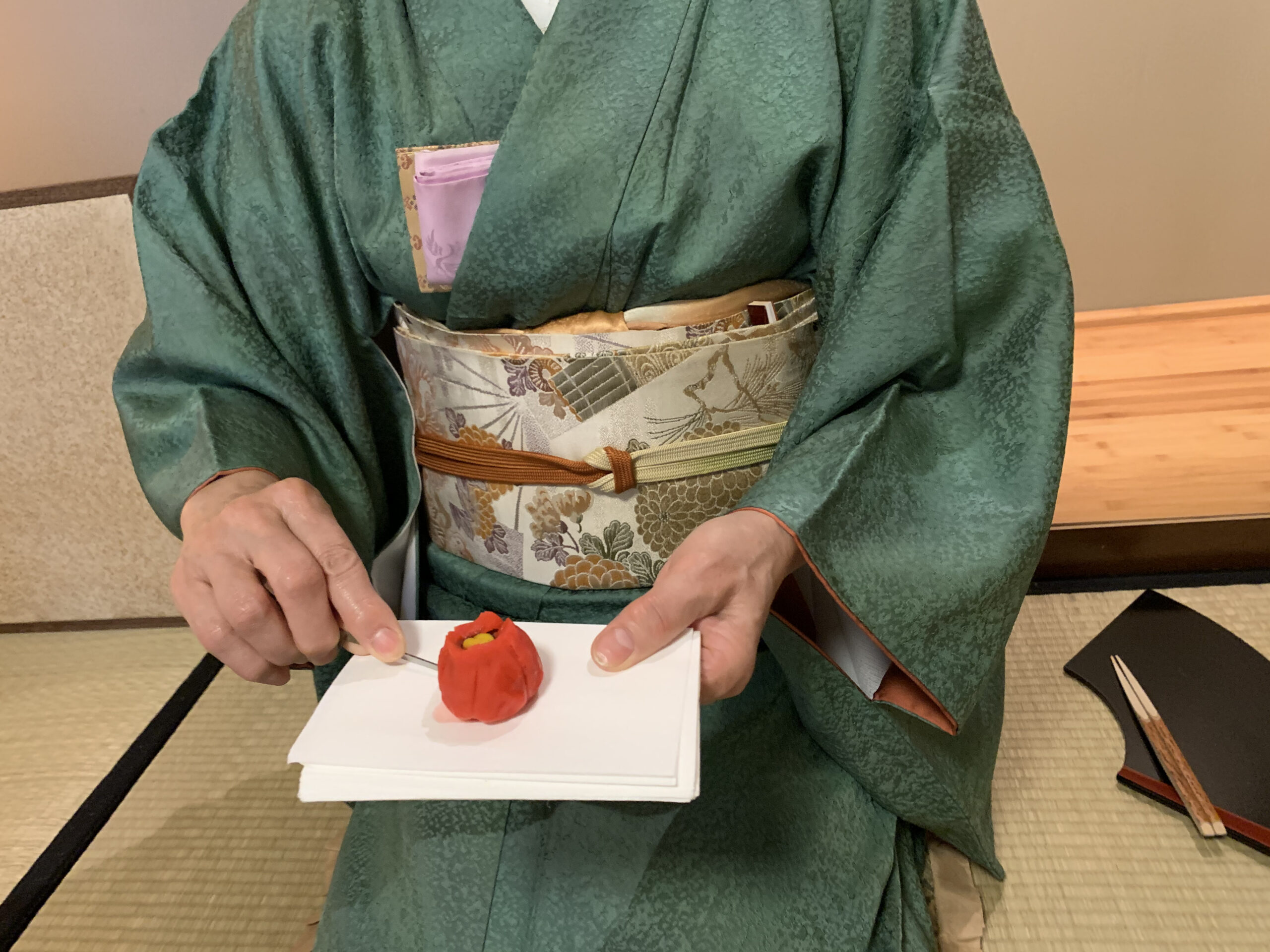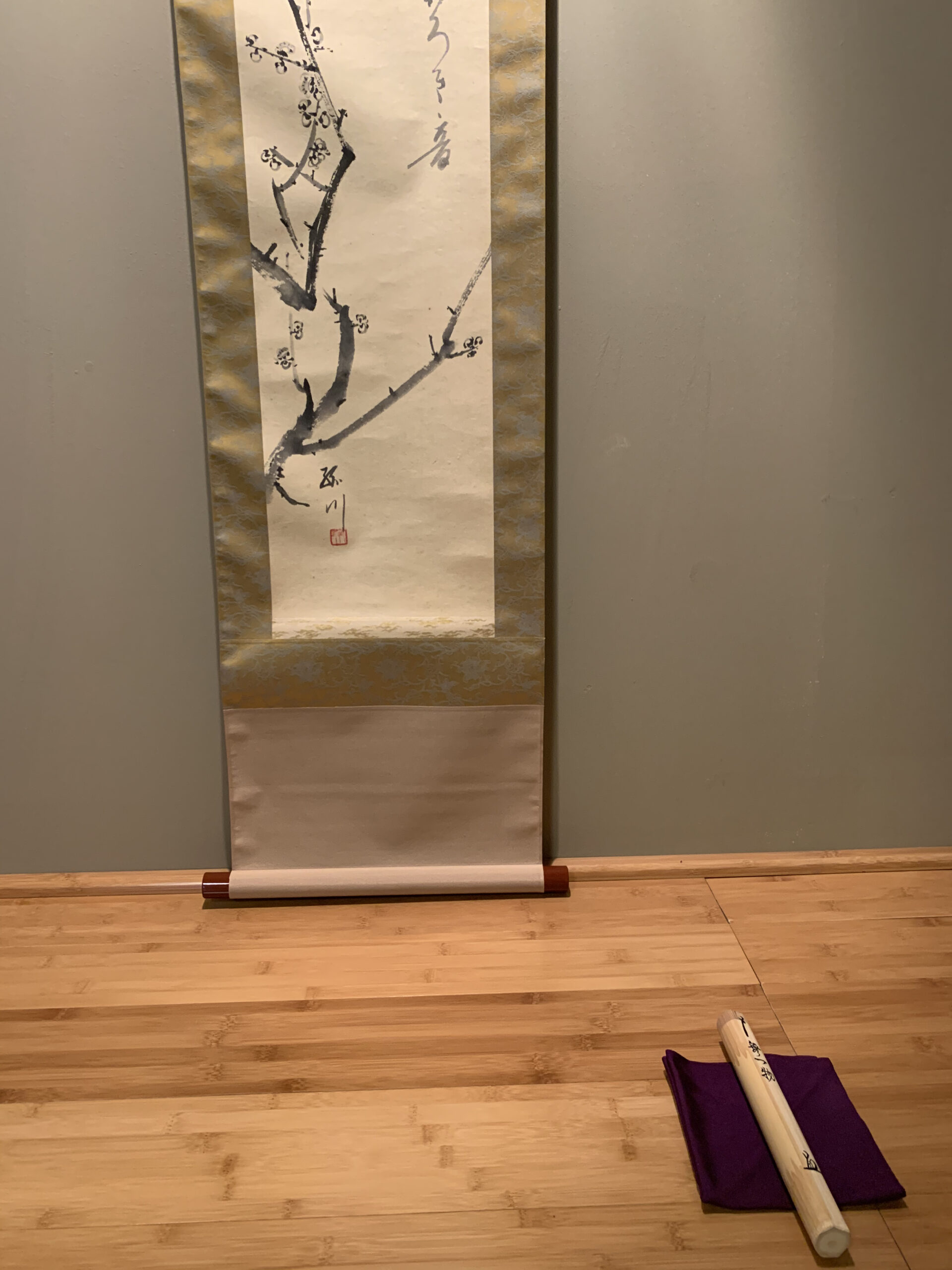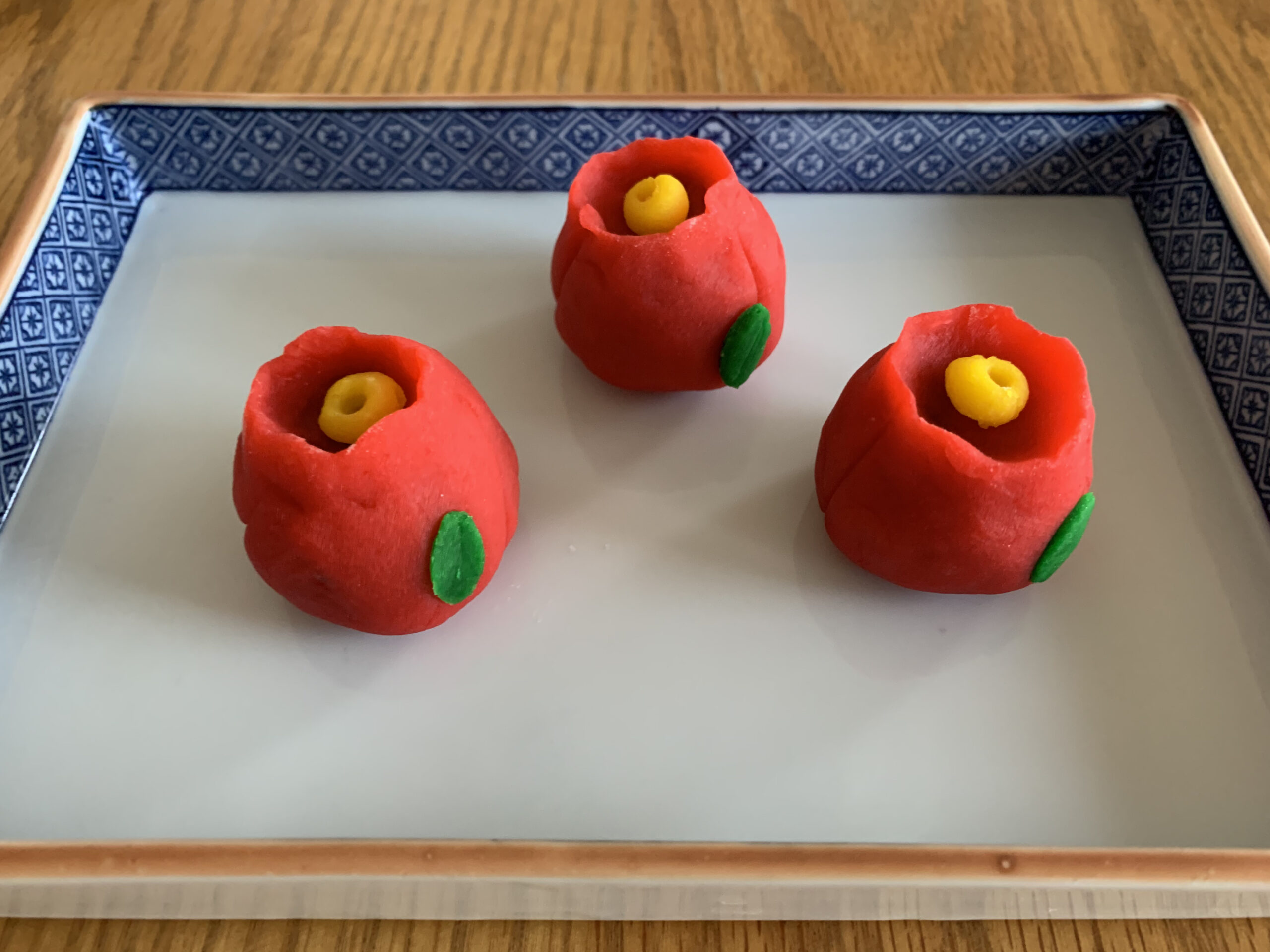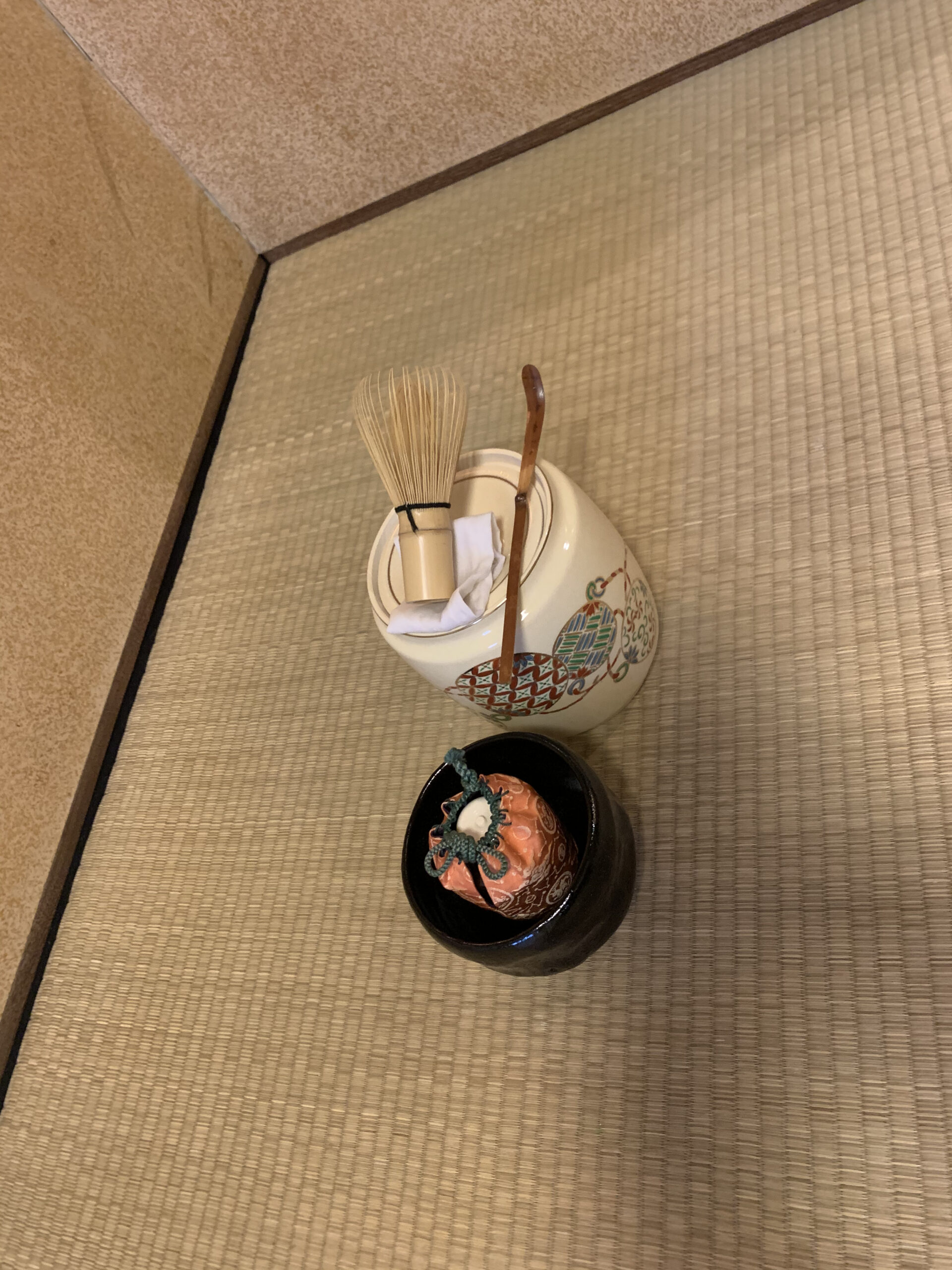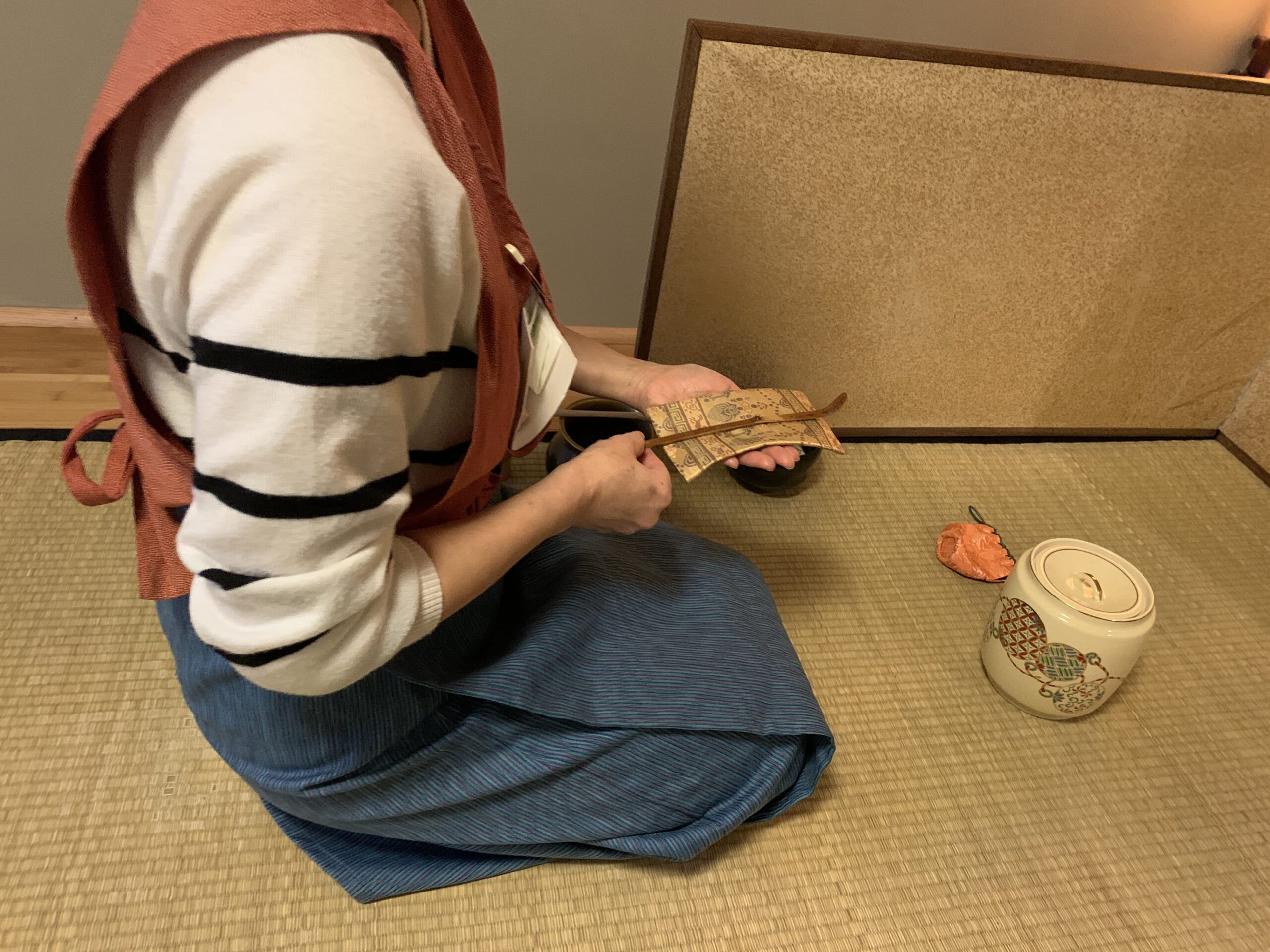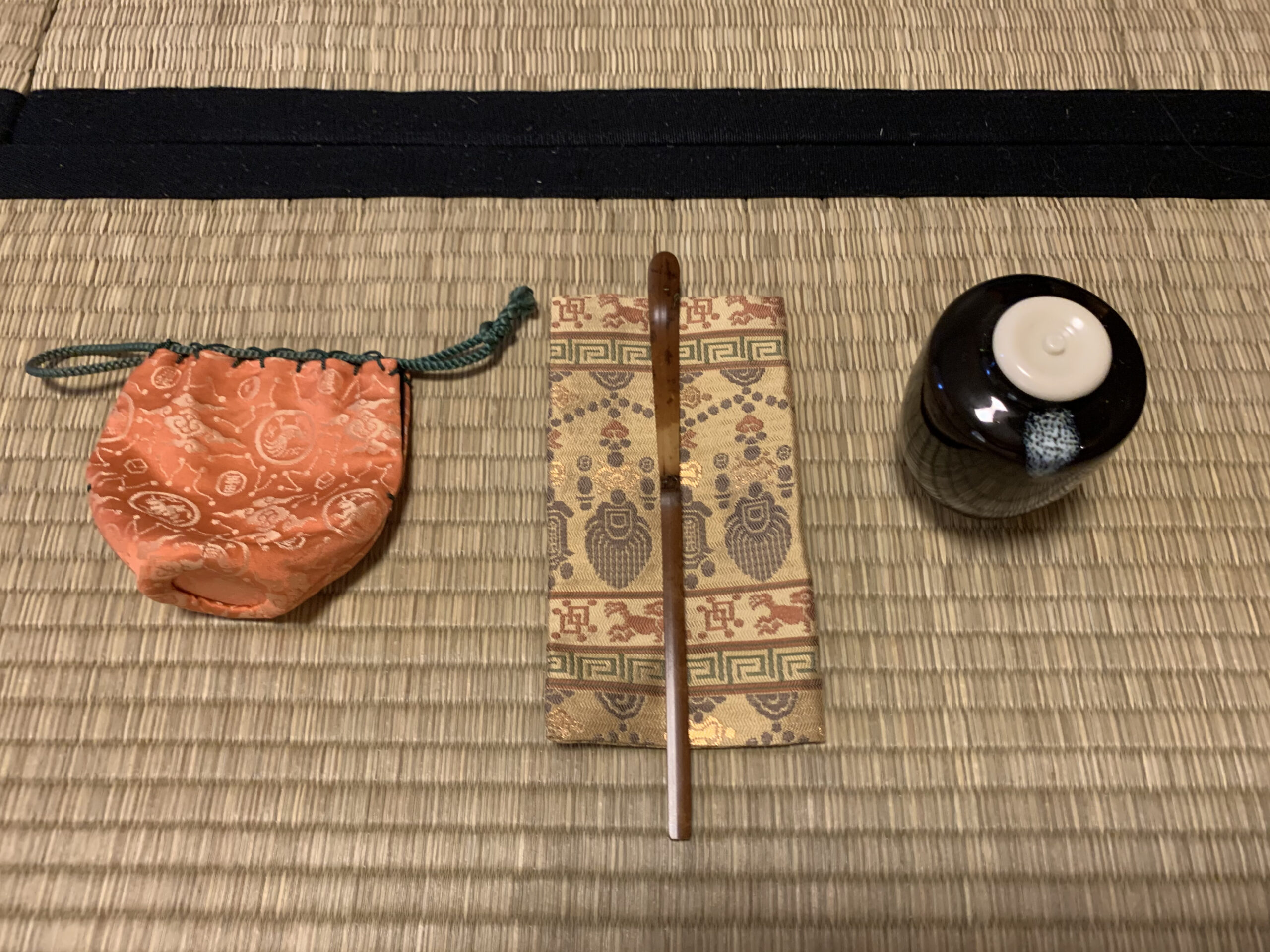今月のお菓子は椿です。銘は『紅椿』
日本では冬から春に掛けて外出の折には必ず椿の花を目にすることができます。特に真っ赤な藪椿は常緑樹の葉とのコントラストが美しく思わず足を留めてしまいます。ここセントルイスでは冬の間は勿論のこと早春までは、戸外の花を滅多に見ることができません。そこで、茶室に最も似合う花の椿をお菓子で作ってみました。お茶室がぱっと華やかになりました。
In the first week of March, one of my students and I made nerikiri, which we nicknamed “red camellia.” In Japan when we go out during winter and spring, blooming camellias, beautiful red flowers with shiny green leaves, are often spotted. Since none of these traditional and frequently-used flowers are now in bloom in St. Louis, we created one as a sweet, and instantly it has brightened up our tearoom.
3月の利休百首は
規矩作法 まもりつくして
やぶるとも 離るるとても 本を忘るな
この教訓は私達、道半ばの修行の身の者達には、到底当てはまるものではありませんが、道を究め熟達した茶人であっても、たとえ決まり事や作法を破ったり逸脱したりしたとしても根本の原理を忘れてはいけませんよということなのです。基本が如何に大切であるかと説いているのですね。
Rikyo’s poem for the month of March is
“Observe the standards and rules of form to the limit,
and though you may break them or depart from them,
never forget the principles.”
These words don’t yet apply to tea practitioners like us who still have a long road of learning ahead. But tea masters, who may sometimes break rules or depart from them, should always remember the basic foundation of the tea ceremony.
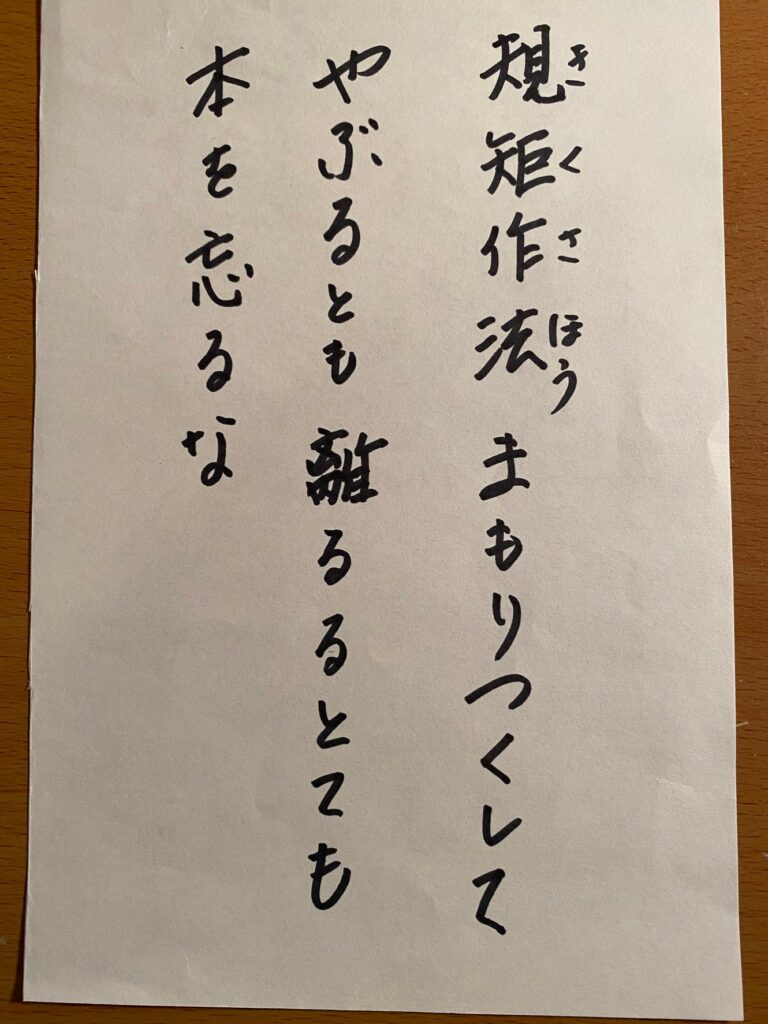
今週は『茶杓荘』です。茶杓の作は橋本紹尚和尚、銘は無一物です。『茶入荘』とともに濃茶のみのお点前となります。これは茶杓に由緒などがあり、連客に披露するお点前です。初座の床に軸を掛け、正方形に折った紫の袱紗の上に、茶杓の入った筒の銘が見えるようにおいて荘ります。そして、客が中立している間に、床の軸を外し、花を置き、いつもの荘点前のように荘りつけをします。お点前は、基本は荘点前同様ですが、茶杓を拝見に出す際に懐中の古帛紗を取り出し、その上に茶杓を載せて出します。拝見の問答の中で、茶杓について尋ねる時に由緒を尋ね、問答が終わると、亭主は常の通り、仕覆、茶杓を左手に載せ、右手で古帛紗を懐中して、茶入れを取ります。これで、『茶碗荘』『茶筅荘』『茶入荘』『茶杓荘』四つの点前のお稽古が終わりました。
This procedure is only performed with thick tea just like chaire (tea container) and kazari (decoration). The featured utensil is a chashaku (teaspoon), one that has some special meaning or history for the host.
When the guests enter the tearoom, they see on the alcove floor only a scroll and a bamboo tube on a folded purple cloth. The name of the teaspoon on the container was written by a monk using black ink and a brush. After eating their meal, the guests leave the room, and the host replaces the scroll with a flower. The rest of the procedure is quite similar to the other three kazari procedures. The only difference is that the spoon is placed on the kofukusa cloth for viewing.
Now our practices have covered all four kazari procedures—chawan, chasen, chaire, and chashaku
